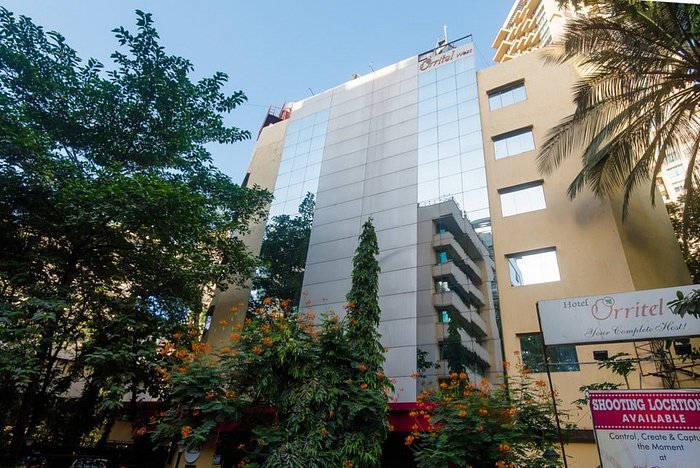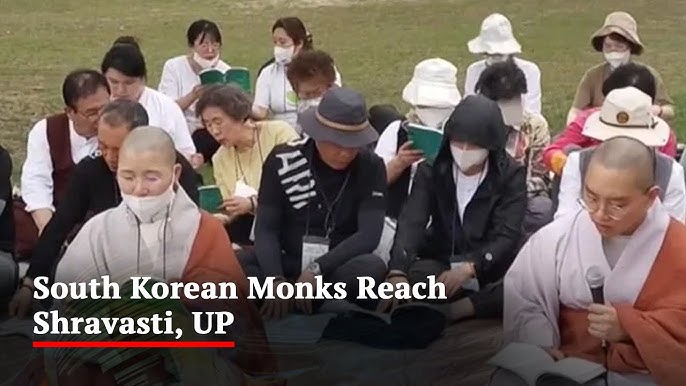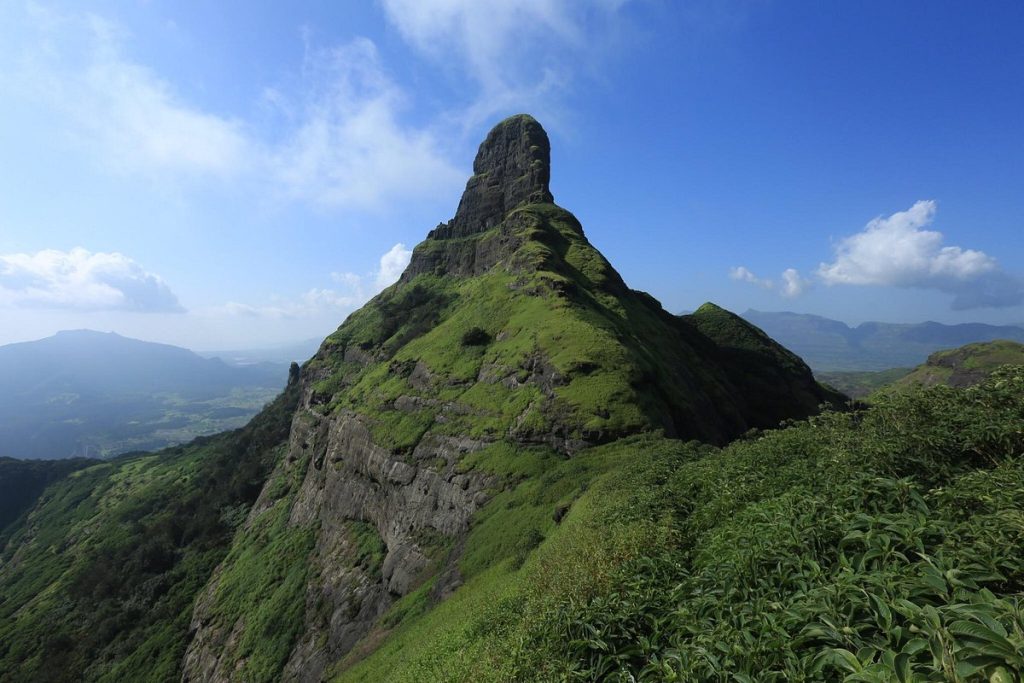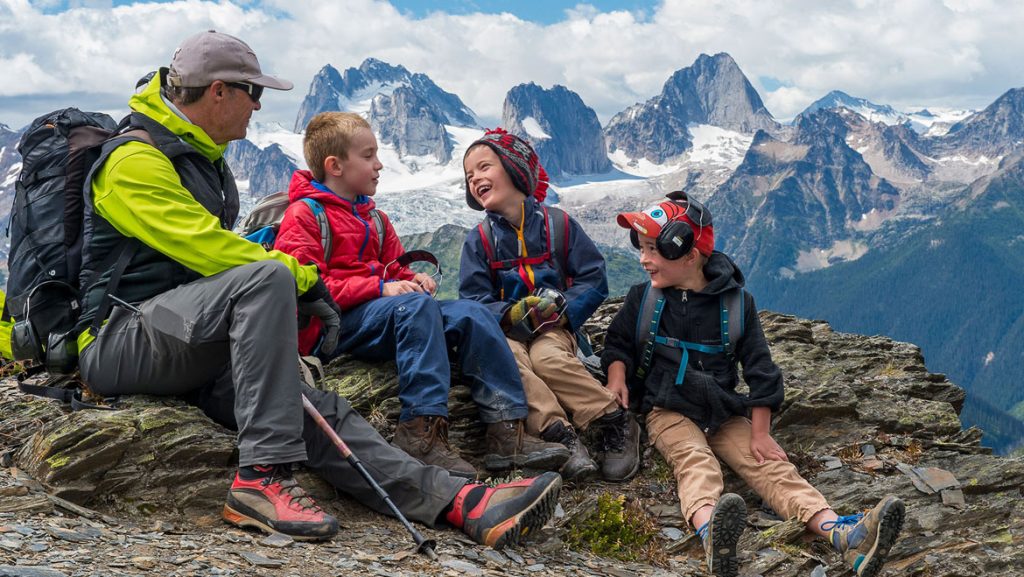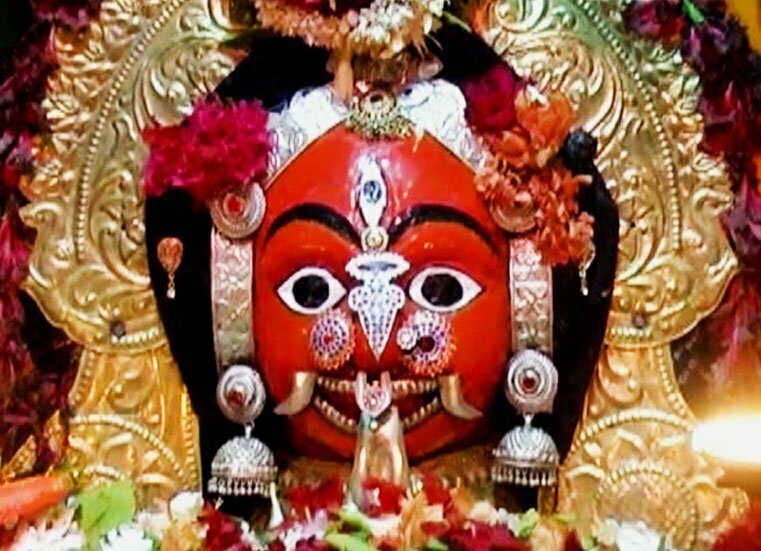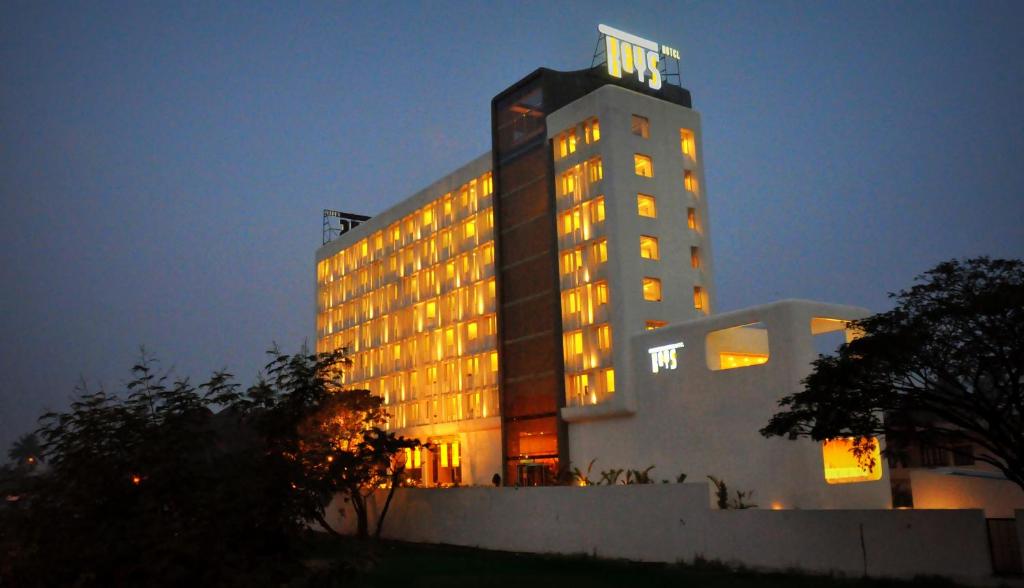Ratangad Fort is a gem nestled in the Sahyadri mountains. It boasts a rich history and stunning views.
Perched at 4,255 feet, Ratangad Fort has witnessed centuries of history. It is a popular destination for trekkers and history buffs alike. The fort’s ancient walls tell tales of battles and bravery. Visitors are greeted with panoramic vistas of lush valleys and flowing rivers.
The fort’s natural rock formations and caves add to its allure. Whether you’re seeking adventure or a glimpse into the past, Ratangad Fort offers both. This guide will take you through the wonders of Ratangad Fort, ensuring you don’t miss a thing. Prepare to explore, learn, and be amazed by this historic marvel.

Credit: en.wikipedia.org
Introduction To Ratangad Fort
Nestled in the Sahyadri mountain range, Ratangad Fort is a treasure trove of history and natural beauty. If you’re someone who loves trekking and exploring historical sites, this fort is a must-visit. Imagine walking through ancient ruins while enjoying panoramic views of lush greenery and distant peaks. Intrigued? Let’s dive deeper into what makes Ratangad Fort so special.
Historical Significance
Ratangad Fort, believed to be over 2000 years old, has a rich history that dates back to the Maratha Empire. The fort was a favorite of Chhatrapati Shivaji Maharaj. He used it as a strategic outpost during his campaigns. Walking through the fort, you can almost hear the echoes of ancient battles and feel the presence of warriors who once roamed these grounds.
The fort’s name, “Ratangad,” translates to “Jewel Fort,” symbolizing its importance and beauty. Historical records and local folklore suggest that the fort was a crucial stronghold in controlling the surrounding region. The fort’s architecture, including its bastions and gates, reflects the military engineering skills of that era.
Geographical Location
Located in the Ahmednagar district of Maharashtra, Ratangad Fort sits at an elevation of about 4255 feet. The fort is surrounded by the Bhandardara dam and various scenic landscapes, making it a perfect destination for nature lovers. The trek to the fort is moderately challenging, offering a thrilling experience for adventurers.
The fort is accessible from Ratanwadi village, which serves as the base for the trek. The journey to Ratangad Fort takes you through dense forests, gushing waterfalls, and picturesque valleys. As you ascend, the view becomes more breathtaking, and the air more refreshing. The fort’s location offers a 360-degree view of neighboring peaks like Alang, Madan, and Kulang.
Have you ever trekked to a fort that offers such a blend of history and natural beauty? If not, Ratangad Fort should be on your travel list. The experience is both rewarding and unforgettable.
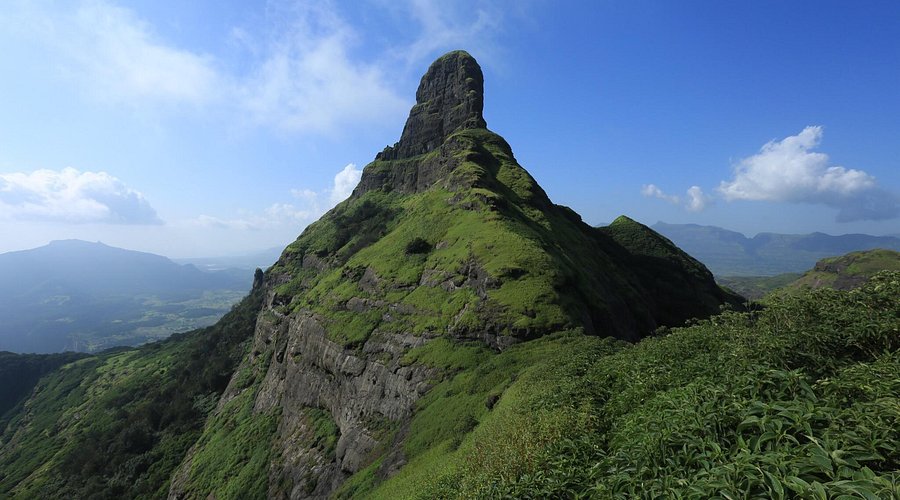
Credit: www.tripadvisor.com
Architectural Marvels
Ratangad Fort, located in Maharashtra, India, stands as an architectural marvel. Ancient walls and stunning views capture the imagination.
### Architectural Marvels Ratangad Fort, perched in the stunning Sahyadri ranges, is not just a treat for trekkers but also for history buffs and architecture enthusiasts. The fort’s architecture tells tales of ancient engineering prowess and the brilliant minds that designed it. Here, we delve into the architectural marvels that make Ratangad Fort an exceptional historical monument. ### Unique Design Elements One of the most striking features of Ratangad Fort is its Nedhe, which means ‘eye of the needle’ in Marathi. This naturally formed hole in the rock is not just a visual delight but also a functional design element. It serves as a natural lookout point. Imagine standing there, feeling the wind on your face while gazing at the panoramic views of the lush landscapes. Doesn’t it make you wonder how ancient builders leveraged natural formations to their advantage? Another unique aspect is the Amruteshwar Temple located at the base of the fort. This temple, dedicated to Lord Shiva, showcases Hemadpanthi architectural style. The intricate carvings on the pillars and walls are a testimony to the craftsmanship of the era. You’ll find yourself lost in the detailed sculptures and wondering about the stories they tell. ### Ancient Structures The cisterns on the fort are another architectural marvel. These ancient water storage systems, carved out of rock, speak volumes about the advanced engineering skills of our ancestors. Even today, these cisterns hold water, proving their durability and efficient design. Have you ever thought about how crucial water management was in ancient fortresses? As you explore further, the fort walls and bastions capture your attention. Constructed with large stones and lime mortar, these walls have withstood centuries of wear and tear. Each stone placed with precision, each bastion designed for defense, showcases the strategic brilliance of the fort’s builders. Walking along these walls, you can almost hear the echoes of the past. ### Conclusion Exploring Ratangad Fort is like stepping back in time. Each structure, whether it’s the Nedhe, the Amruteshwar Temple, or the ancient cisterns, offers a glimpse into the ingenuity of our ancestors. So next time you visit, take a moment to appreciate these architectural marvels. Who knows, it might inspire you to look at modern architecture with a fresh perspective. Have you visited any historical sites that left you in awe of ancient engineering? Share your experiences in the comments below.Journey To Ratangad Fort
The journey to Ratangad Fort is a blend of adventure and history. Located in Maharashtra, this fort offers stunning views and a rich past. The route to the fort is filled with scenic beauty, making the trek enjoyable. Let’s explore the travel routes and the best time to visit Ratangad Fort.
Travel Routes
Ratangad Fort can be reached from Mumbai or Pune. From Mumbai, take the NH160 route. This route passes through Igatpuri and Bhandardara. The distance is about 180 km. From Pune, follow the NH50 route. This route covers around 210 km. Both routes offer picturesque views along the way.
Once you reach Ratanwadi village, the trek begins. The trek is moderate and takes about 3-4 hours. The trail is well-marked, making it easy to follow. Ensure you carry enough water and snacks for the trek.
Best Time To Visit
The best time to visit Ratangad Fort is during the monsoon or winter. Monsoon months are June to September. During this time, the region is lush and green. The waterfalls and streams are in full flow.
Winter months are from October to February. This period offers cool and pleasant weather. The skies are clear, making it perfect for photography. Avoid visiting during summer. The heat can make the trek difficult.
Adventure Activities
Ratangad Fort offers thrilling adventure activities like trekking and rock climbing. Explore ancient caves, waterfalls, and scenic views on your journey.
Exploring the ancient and majestic Ratangad Fort is an adventure enthusiast’s dream. Nestled in the Sahyadri mountain range, this fort is not just a historical marvel but also a hub for various adventure activities. Whether you are a thrill-seeker or someone who enjoys the serenity of nature, Ratangad Fort offers experiences that cater to all. Let’s dive into some of the exhilarating adventure activities you can enjoy here.Trekking Trails
Ratangad Fort is renowned for its diverse trekking trails. The trek to the fort is a moderately challenging one, making it suitable for both beginners and experienced trekkers. The journey is filled with lush greenery, cascading waterfalls, and stunning views of the surrounding mountains. One of the most popular routes is the Ratanwadi village trail. As you ascend, you will pass through dense forests and rocky terrains. The trail is well-marked, but it’s essential to keep an eye out for slippery patches, especially during the monsoon season. Have you ever wondered what it feels like to walk through a cloud? That’s exactly what you might experience as you near the top of the fort. The misty atmosphere adds an element of mystery and excitement to the trek.Camping Spots
Camping at Ratangad Fort is an adventure in itself. The fort offers several spots where you can set up camp and enjoy a night under the stars. Imagine the thrill of sleeping inside a historical fort, surrounded by the sounds of nature. One of the best camping spots is the plateau near the fort’s entrance. This location provides a panoramic view of the valley below and the surrounding peaks. It’s an ideal spot for a bonfire, where you can share stories and enjoy a warm meal with fellow adventurers. If you prefer a more secluded experience, you can hike a bit further and find hidden spots within the fort’s ruins. These areas offer a more intimate setting and are perfect for those seeking solitude. Make sure to carry your own camping gear, as there are no facilities available at the fort. This includes tents, sleeping bags, and enough food and water for your stay. And remember, always leave no trace to preserve the beauty of this historical site for future adventurers. Ratangad Fort is not just a place; it’s an experience waiting to be discovered. So, what are you waiting for? Pack your bags, lace up your hiking boots, and embark on an adventure that you’ll remember for a lifetime.Flora And Fauna
Ratangad Fort boasts rich flora and fauna, making it a nature lover’s paradise. Visitors can spot rare plants and various animal species. The lush greenery enhances the fort’s scenic beauty.
Ratangad Fort, nestled in the scenic Sahyadri Range, is a treasure trove of natural beauty. But beyond its historical significance, one of the fort’s most captivating aspects is its diverse flora and fauna. Whether you are a nature enthusiast or someone seeking a serene escape, the biodiversity here will leave you spellbound. Let’s delve into the enchanting world of Ratangad’s flora and fauna. ###Local Wildlife
Ratangad Fort is home to a variety of wildlife that thrives in the lush environment. You might be lucky enough to spot some of the region’s unique animals during your visit. The fort’s surroundings are frequented by macaques and langurs, both of which can be quite entertaining to watch. Bird watchers will be delighted by the sight of Indian rollers, kingfishers, and even the majestic crested serpent eagle. Each bird has its unique call that adds to the symphony of the forest. If you keep your eyes peeled, you may also encounter the elusive leopard or hear the distant howls of jackals. Have you ever heard the sound of the forest come alive at dusk? It’s a magical experience that you won’t want to miss. The nocturnal creatures, including porcupines and civets, begin their nightly activities, making the night as lively as the day. ###Plant Species
The flora of Ratangad Fort is just as fascinating. The fort is enveloped in a blanket of greenery, with a variety of plant species that thrive in the region’s climate. Among the most common are teak and oak trees, which provide a dense canopy that keeps the area cool. During the monsoon season, the fort transforms into a lush paradise with ferns and mosses covering the ancient walls. The wildflowers, including balsams and orchids, burst into bloom, painting the landscape with vibrant colors. Imagine walking through a path lined with these flowers, with the fresh scent of the forest all around you. Medicinal plants such as neem and tulsi also grow abundantly here. These plants have been used in traditional medicine for centuries, and their presence adds to the fort’s historical significance. Next time you visit, take a moment to appreciate the intricate details of the flora. Notice how the leaves glisten with dew, and how the flowers sway gently in the breeze. It’s these small wonders that make Ratangad Fort a haven for nature lovers. Have you ever considered how these plants and animals interact to create a balanced ecosystem? Each species, no matter how small, plays a crucial role in maintaining the health of the forest. Your visit can be more than just a hike; it can be a journey into understanding the delicate balance of nature. So, pack your bags, put on your hiking boots, and immerse yourself in the natural beauty of Ratangad Fort. Who knows what wonders you will discover?Cultural Heritage
Ratangad Fort, perched in the Sahyadri ranges, is more than a historical monument. It holds a rich cultural heritage that spans centuries. This fort is a symbol of ancient traditions and stories passed down through generations. Let’s explore some of these captivating aspects.
Local Legends
Many local legends surround Ratangad Fort. One famous tale speaks of the fort being a favorite of the Maratha king, Chhatrapati Shivaji Maharaj. It is said that he used it as a strategic point. The fort’s name, Ratangad, means ‘Jewel Fort,’ suggesting it was highly valued.
Another legend talks about the mystical caves within the fort. These caves are believed to be meditation spots for ancient sages. Locals believe the caves have spiritual significance.
Traditional Practices
The nearby villages celebrate the fort’s history through various traditional practices. One such practice is the annual festival held at the fort’s base. Villagers gather to honor their ancestors and the fort’s legacy.
Traditional music and dance performances mark these celebrations. Local artisans showcase their skills, preserving age-old crafts. These practices keep the fort’s cultural heritage alive and vibrant.
Preparation Tips
Pack sturdy shoes for hiking. Bring sufficient water and snacks. Carry a map and flashlight for safe navigation.
Planning to visit the majestic Ratangad Fort? It’s a thrilling experience to explore this historic site perched high in the Western Ghats. To make your trip safe and enjoyable, preparation is key. Here are some essential tips to ensure you’re well-prepared for your adventure. ###Essential Gear
When hiking to Ratangad Fort, the right gear can make all the difference. Here are some must-haves for your trek: – Sturdy Footwear: Opt for hiking boots with good grip. The trail can be rocky and slippery, especially during the monsoon. – Backpack: A comfortable, waterproof backpack to carry your essentials is crucial. – Water Bottles: Stay hydrated. Carry at least 2-3 liters of water. Dehydration can sneak up on you, especially during the climb. – Snacks: Pack energy-boosting snacks like nuts, dried fruits, and energy bars. – First Aid Kit: Include band-aids, antiseptic wipes, and any personal medication. – Rain Gear: A lightweight rain jacket or poncho is essential if you’re trekking during the monsoon. – Flashlight or Headlamp: Useful for early morning starts or if you plan to stay overnight. – Navigation Tools: A map and a compass or a GPS device can help you stay on track. ###Safety Measures
Safety should always be your top priority. Here are some key safety tips for your Ratangad Fort trek: – Weather Check: Always check the weather forecast before you set off. Avoid trekking during heavy rains or storms. – Travel in Groups: It’s safer and more fun to trek with friends or a group. This also ensures help is available if someone gets injured. – Tell Someone: Inform a friend or family member about your trekking plan, including your expected return time. – Stay on the Trail: Straying off the marked trail can be dangerous. Stick to the designated paths. – Pace Yourself: Trekking is not a race. Take breaks and listen to your body. If you feel dizzy or overly tired, take a rest. – Wildlife Awareness: Be aware of your surroundings. If you encounter wildlife, maintain a safe distance and do not provoke the animals. – Emergency Contacts: Keep a list of emergency contact numbers handy, including local rescue services. What’s the one piece of gear you never leave behind on a trek? How do you ensure your safety on the trail? Your insights can make a difference for fellow trekkers. By following these preparation tips, you’re well on your way to having a memorable and safe adventure at Ratangad Fort. Happy trekking!
Credit: en.wikipedia.org
Nearby Attractions
Ratangad Fort offers stunning views of the Sahyadri range. Nearby attractions include Bhandardara Lake and the serene Randha Falls. Perfect for nature enthusiasts and history buffs.
When you visit Ratangad Fort, the adventure doesn’t end with the fort itself. The surrounding area is rich with other attractions that can make your trip even more memorable. Whether you are an avid hiker, a history enthusiast, or someone who loves nature, there is something for everyone. Let’s explore some nearby attractions that you shouldn’t miss.Other Forts
If Ratangad Fort has piqued your interest in historical structures, you’ll be thrilled to know there are other forts nearby that are equally captivating: – Harishchandragad Fort: Known for its challenging hikes and breathtaking views, Harishchandragad offers a different kind of adventure. Its Konkan Kada is a must-see for its stunning cliffside view. – Alang, Madan, and Kulang (AMK): A trio of forts often tackled in a single trek by experienced hikers. These forts are known for their rugged terrain and the rewarding sense of accomplishment upon completion. – Pabhargad Fort: This lesser-known fort offers a serene environment and less crowded trails. Perfect for a quiet day of exploration. Have you ever wondered what stories these ancient walls could tell if they could speak? Every fort has its own unique history and legends waiting to be discovered.Natural Wonders
The area around Ratangad Fort is not just a haven for history buffs but also for nature lovers. Here are some natural wonders you shouldn’t miss: – Sandhan Valley: Also known as the Valley of Shadows, this is a deep and narrow rock gorge that offers an exhilarating rappelling experience. It’s perfect for thrill-seekers looking to add an adrenaline rush to their trip. – Randha Falls: Just a short drive from the fort, these majestic waterfalls are a sight to behold, especially during monsoon season. The thunderous roar of the water and the misty air create an unforgettable experience. – Amruteshwar Temple: Nestled amidst lush greenery, this ancient temple offers a peaceful retreat. The intricate stone carvings and serene surroundings make it a perfect spot for some quiet reflection. Taking a moment to admire these natural wonders can be a refreshing break from the hustle of daily life. Imagine standing at the edge of a waterfall, feeling the cool mist on your face—what a fantastic way to connect with nature! By exploring these nearby attractions, you can enrich your visit to Ratangad Fort and experience a well-rounded adventure. Whether it’s the thrill of discovering another fort or the peace found in nature, there’s something here to captivate every traveler’s heart. What will you discover next on your journey? Dive into these experiences and let the magic of the surroundings enhance your adventure!Frequently Asked Questions
What Is Ratangad Fort Famous For?
Ratangad Fort is famous for its stunning views, ancient caves, and the natural rock formation called “Nedhe” or “Eye of the Needle. ” It’s a popular trekking destination in Maharashtra.
How Difficult Is The Ratangad Trek?
The Ratangad Trek is moderately challenging. It features steep climbs, rocky terrain, and can take 5-6 hours to complete. Proper fitness and preparation are essential.
Which Is The Toughest Fort In Trekking?
Alang Fort in Maharashtra is considered the toughest fort for trekking. It challenges trekkers with steep climbs and rugged terrain.
How Tall Is Ratangad Fort In Feet?
Ratangad Fort stands at an elevation of 4,255 feet. It offers stunning views of the surrounding landscapes.
Conclusion
Ratangad Fort offers a unique blend of history and adventure. Visitors enjoy stunning views and memorable hikes. The ancient architecture fascinates history buffs and casual tourists alike. This fort is an ideal weekend getaway for nature lovers. Exploring Ratangad Fort is a journey through time and beauty.
Pack your bags and experience the charm of Ratangad Fort firsthand. Your adventure awaits at this magnificent historic site.
{ “@context”: “https://schema.org”, “@type”: “FAQPage”, “mainEntity”: [ { “@type”: “Question”, “name”: “What is Ratangad fort famous for?”, “acceptedAnswer”: { “@type”: “Answer”, “text”: “Ratangad Fort is famous for its stunning views, ancient caves, and the natural rock formation called \”Nedhe\” or \”Eye of the Needle.\” It’s a popular trekking destination in Maharashtra.” } } , { “@type”: “Question”, “name”: “How difficult is the Ratangad Trek?”, “acceptedAnswer”: { “@type”: “Answer”, “text”: “The Ratangad Trek is moderately challenging. It features steep climbs, rocky terrain, and can take 5-6 hours to complete. Proper fitness and preparation are essential.” } } , { “@type”: “Question”, “name”: “Which is the toughest fort in trekking?”, “acceptedAnswer”: { “@type”: “Answer”, “text”: “Alang Fort in Maharashtra is considered the toughest fort for trekking. It challenges trekkers with steep climbs and rugged terrain.” } } , { “@type”: “Question”, “name”: “How tall is Ratangad fort in feet?”, “acceptedAnswer”: { “@type”: “Answer”, “text”: “Ratangad Fort stands at an elevation of 4,255 feet. It offers stunning views of the surrounding landscapes.” } } ] }
